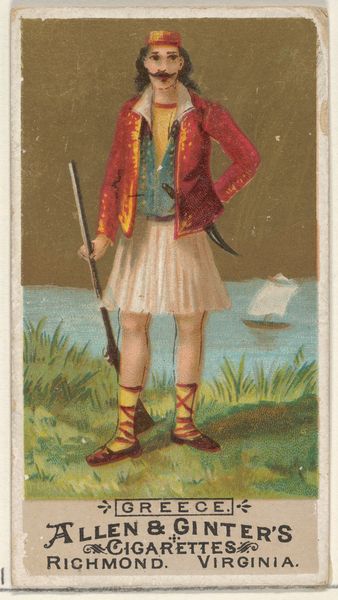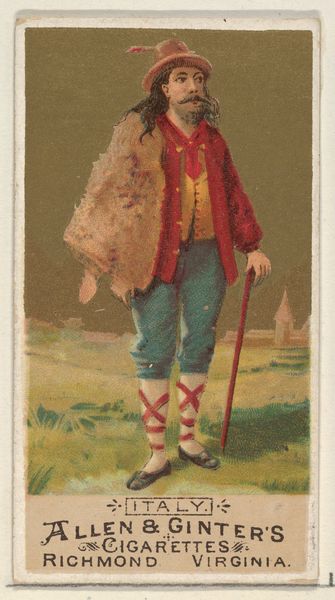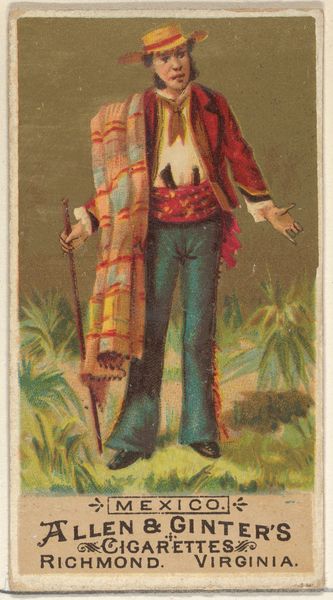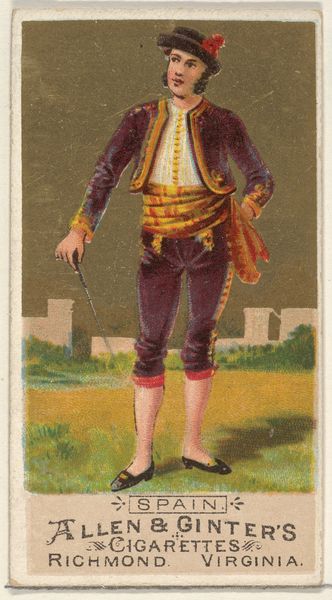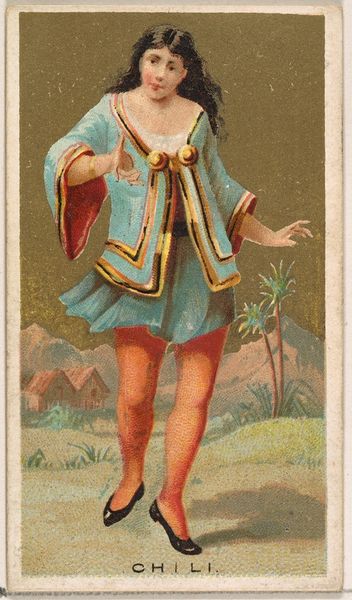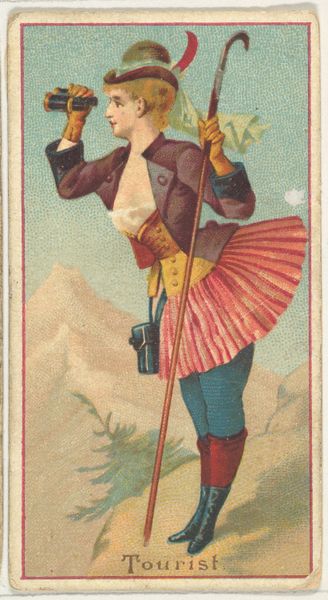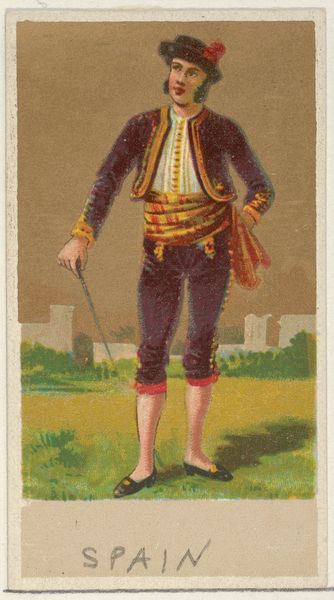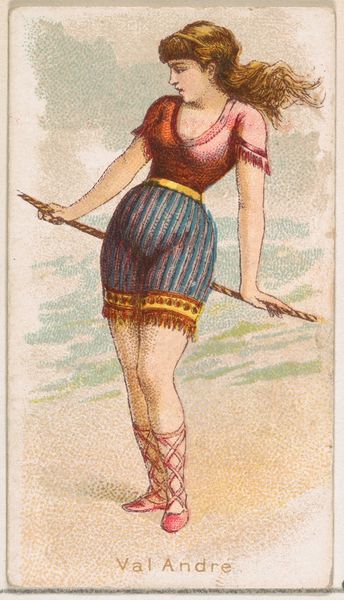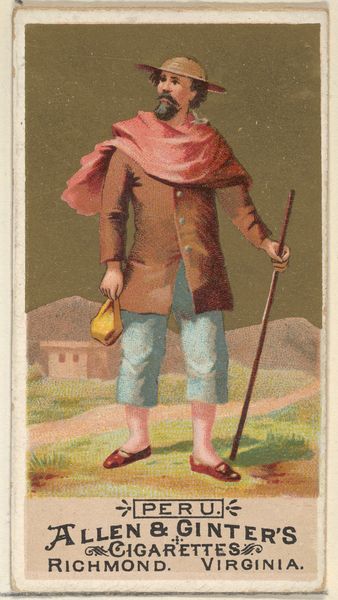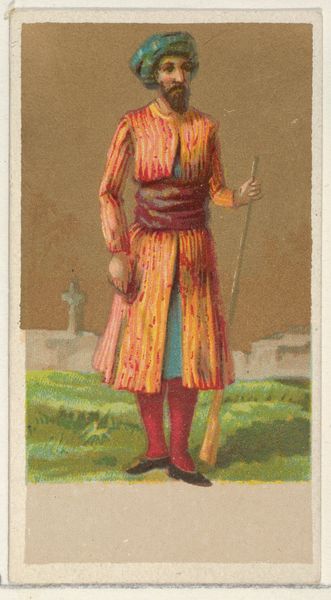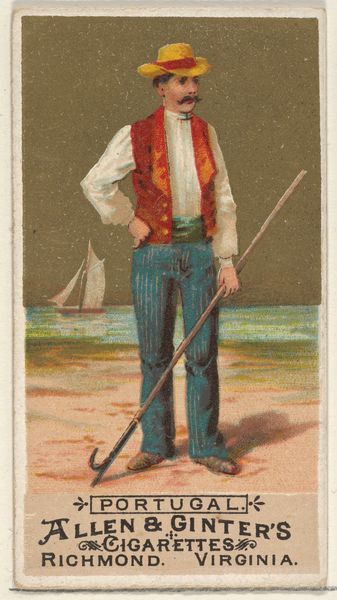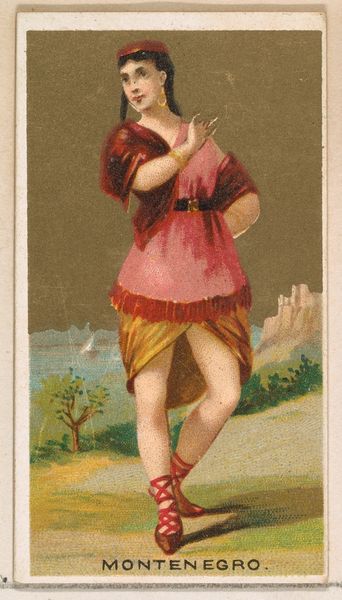
Greece, from the Natives in Costume series (N16), Teofani Issue, for Allen & Ginter Cigarettes Brands 1886 - 1900
0:00
0:00
Dimensions: Sheet: 2 3/4 x 1 1/2 in. (7 x 3.8 cm)
Copyright: Public Domain
Curator: It's a rather striking image, isn't it? The color palette really grabs you first. Editor: It does. Very saturated tones – almost aggressively so. A small card, but the visual punch is quite something. The drawing is interesting too. The perspective seems off, somehow stylized and flattened at the same time. Curator: Precisely! This colored pencil print comes from Allen & Ginter's "Natives in Costume" series, part of their Teofani Issue of cigarette cards, dating from 1886 to 1900. This particular card depicts a man in traditional Greek attire. The whole series is housed right here at the Metropolitan Museum of Art. It offers such a fascinating lens into late 19th-century cultural perceptions. Editor: A cultural snapshot, absolutely, and rendered with a real flair for the theatrical. Look at the way the clothing defines the figure; it tells you everything about this cultural representation the artist wanted you to see. His stance too, his dress; even the details in his clothing, carrying the weight of a visual and collective memory, revealing elements of dignity and, perhaps, a romantic fantasy. Curator: These cards served to inform—or perhaps misinform—the American public about global cultures, but as you pointed out, they did so with a heavy dose of idealization. His dress suggests freedom, independence. The rifle is never far from hand. I see in him the values Westerners attributed to "ancient" civilizations—simplicity, bravery. Editor: The small size of these trade cards really intensifies their function as disseminators of cultural symbols and myths. He's placed on a small plinth with the country name under him as though in a gallery. In this miniature space, every detail is significant, every color deliberate in creating that idealized image. Curator: What resonates for me is how a tiny commercial object like this acted as a carrier of powerful cultural narratives, shaping perceptions of identity and otherness that persist even today. Editor: Yes, absolutely. And by carefully observing composition, texture and design in such a small-scale portrait we have here, we can see and feel all that cultural context shaping these elements to be readable for its viewers. Thanks to such interesting interplay, we find that visual memory becomes historical interpretation, don't we?
Comments
No comments
Be the first to comment and join the conversation on the ultimate creative platform.
